What is Coral, Anyway?
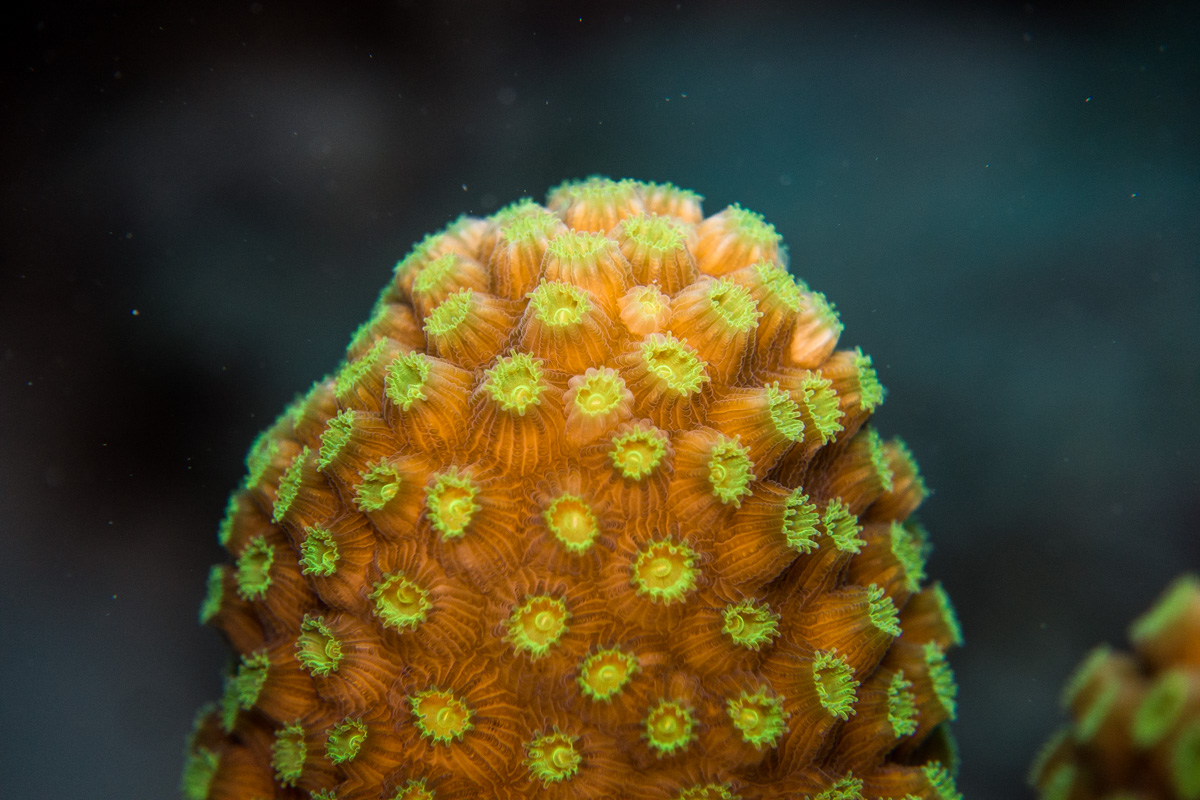
Are you a tropical SCUBA diver? If so, chances are that you love coral. You probably love seeing its variety of shapes- massive tables of tiny geometric fingers, lumpy boulders, intricately patterned spherical “brains,” thickets of twiggy branches- and its variety of colors, from tan to fluorescent purple. But have you ever wondered how corals actually work? Have you ever thought about corals as more than part of the scenery, a stunning backdrop for fish and nudibranchs?
Perhaps you have. There’s been a great deal of news about coral recently, especially concerning the massive bleaching event on Australia’s Great Barrier Reef. You may even have noticed an upward trend in the emphasis on coral care and good buoyancy in some of your recent dive briefings. But most divers (and certainly most human beings) are pretty clueless about what coral is and how it really works, even if they think they know the basics.
When I facilitate marine education programs, I usually ask the audience this question: Is coral a plant, animal, or rock? I get answers across the board. Technically only one choice is correct; however, all three elements are actually involved. Read on for the full, mind-blowing story of the phenomenon that is coral.
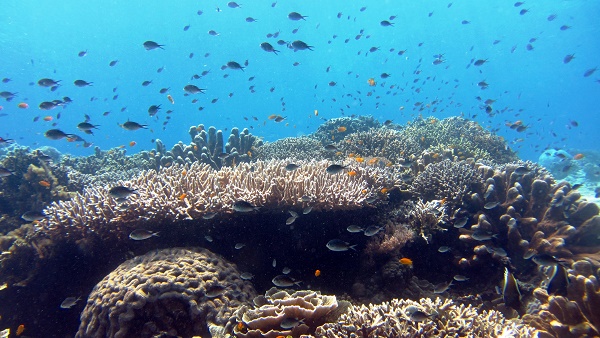
ANIMAL
Yes, coral is an animal. It’s a living, moving, eating, digesting organism which is born, and can die. Coral is a marine organism that looks like an upside-down jellyfish, with a circle of stinging tentacles around a central mouth. Instead of floating through the water, it sits attached to the bottom for its entire life.
As you might have guessed already, coral is often a colonial animal. That means that hundreds, thousands, or millions of little mouths, each surrounded by its own ring of stinging tentacles, live together on the surface of one coral “boulder” or branching “thicket.” We refer to the individual “mouth + tentacles” system as a coral polyp. Each polyp can hunt food for itself, using its stinging tentacles to capture tiny floating plankton from the water column. But the individual polyp shares the energy from its lucky catch with the rest of its brothers and sisters.
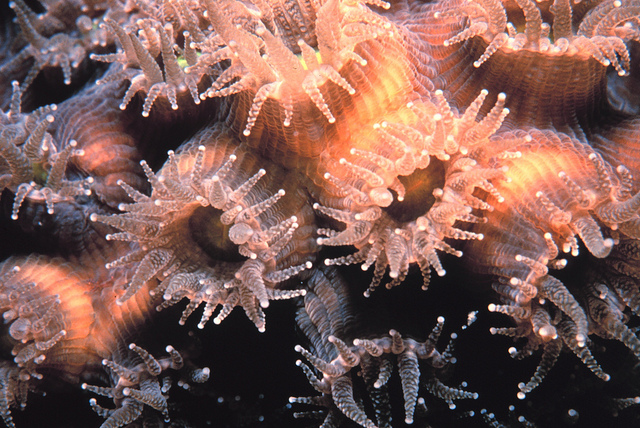
Photographer: Brent Deuel.
ROCK
Are you confused? Are you asking why each coral polyp shares energy instead of keeping it for itself? Let’s rewind… because the coral branches and boulders you see while diving are actually the middle, not the beginning, of the story.
A coral begins as one polyp. I know I said corals sit attached to the bottom for their whole life, but there’s one exception: the first polyp of every colony actually starts out floating through the water with a whole slew of other baby animals like fish and shrimp larvae. The difference between a floating fish larva and a coral polyp is that the coral polyp can’t enter its next life stage without finding a bit of rock to sit on.
So let’s say our coral polyp finds a nice place to settle. This moment marks the beginning of “coral” as we SCUBA divers know it. The coral polyp has a specialized layer of cells along the line of its attachment to the rock. This calceoblastic layer uses minerals from the surrounding seawater to secrete new rock, specifically limestone. The polyp builds up its own limestone seat and simultaneously starts to clone itself, creating identical polyps with their own calceoblastic layers, which build their own seats and clone their own selves.
In this way, the limestone shapes we know and love grow into being- simply from the rock-making chemistry bubbling away in each individual polyp as it builds a safe little home for itself. Why do the polyps even bother with this energy-intensive construction project? Well, imagine you were a jelly-like creature with no hard skeleton and no ability to control the speed or direction of your movement. Even with stingers, it’s pretty likely you’d make an easy meal. But with a rock house you can hide in during times of danger, you’re about a hundred times more likely to live your life in peace.
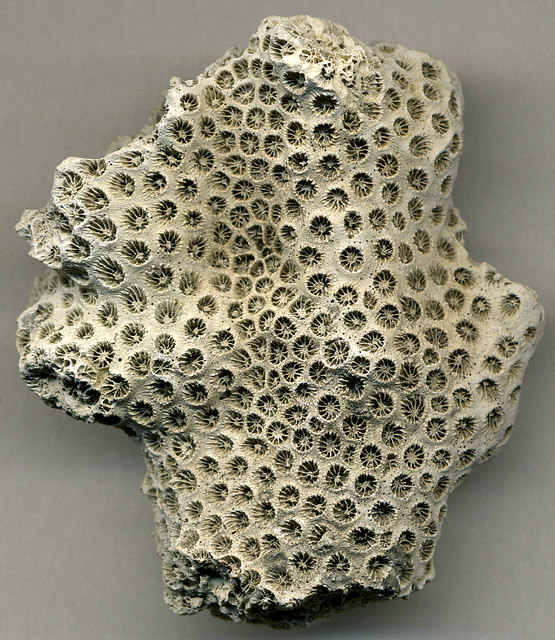
Solenastrea hyades (5.3 cm across) from the Croatan Formation (Lower Pleistocene) of eastern North Carolina, USA.
—————–
Well-preserved fossils are abundant in the Lower Pleistocene Croatan Formation (a.k.a. James City Formation) of eastern North Carolina, USA. Here’s a nice specimen of the scleractinian coral Solenastrea hyades (Dana, 1846) showing nicely radiating septa in each corallite.
Classification: Animalia, Cnidaria, Anthozoa, Hexacorallia, Scleractinia, Faviina, Faviidae
PLANT
So that explains shape. But what about color? When you think about it, it doesn’t make any sense that coral comes in shades of pink, blue, red, and green, if the rock that they make is limestone and the tissue of their bodies is like a jellyfish’s. Limestone is white, and jellyfish are clear, so why are corals every color of the rainbow?
The answer is zooxanthellae.
Huh? Most people don’t even know how to pronounce that word, let alone understand its meaning. But it may be the most important aspect of coral. Zooxanthellae (pronounced zoo-zan-theh-lay) is a class of microscopic algae that can live inside the tissue of a coral polyp.
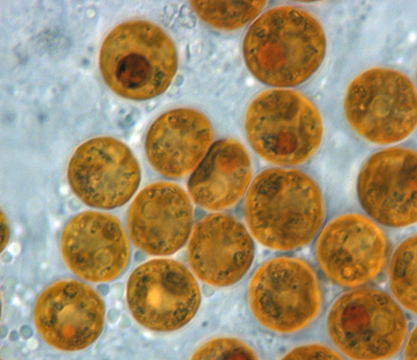
Why would a coral polyp permit a foreign organism to live inside its tissue? Because it gets something important in return: energy.
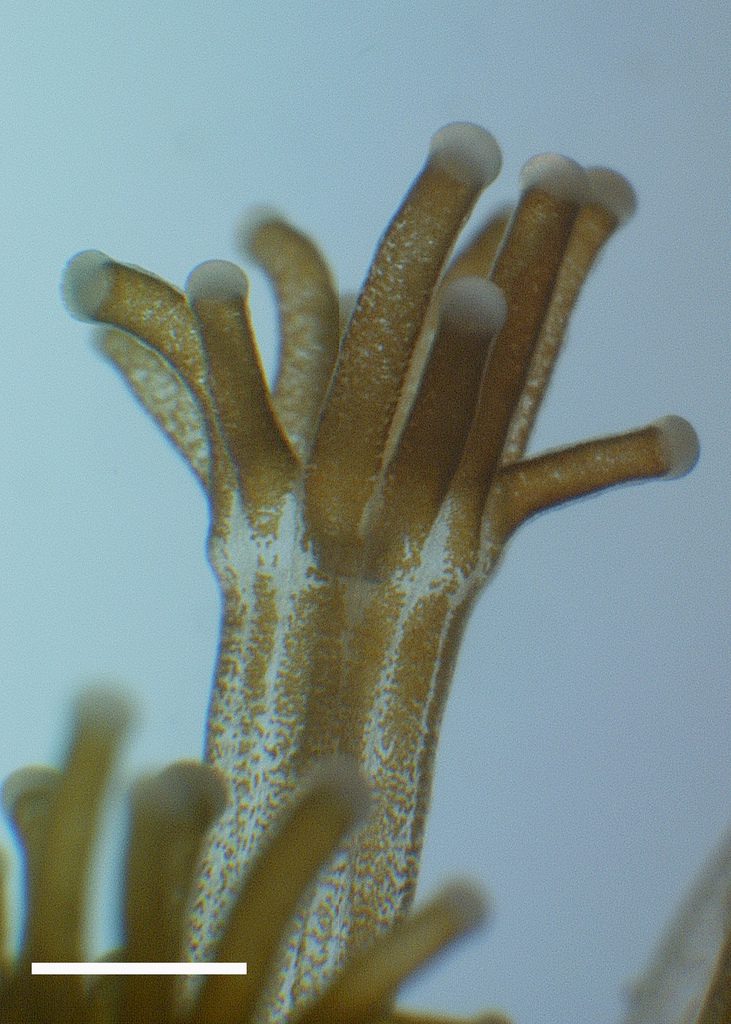
Like all other plants, zooxanthellae conduct photosynthesis. They use the sunlight which infuses the clear, blue water of the shallow tropical oceans to create glucose molecules, an energy-packed sugar which powers all their biological processes. After the zooxanthellae satisfy their needs, there’s still plenty of glucose left over… and the lucky recipient of these precious leftovers is the coral polyp.
With the glucose from the zooxanthellae, coral can accomplish the energy-intensive task of synthesizing and secreting limestone. Zooxanthellae also benefit; they get to live in a home protected by both stingers and rock. It is a perfect symbiosis! And the incredible fish and invertebrates of coral reefs use the structure and shape of coral to live, hide, feed, and generally thrive in the tropical oceans.
What’s the point of understanding coral?
Given that coral is the base of the coral reef ecosystem, whose fish and invertebrates feed millions of people, sustain thousands of livelihoods, and hold uncharted numbers of potential future discoveries for science and medicine, it’s worth protecting. But you can’t protect it unless you know how it works, and therefore, how it’s affected by potential threats.
Bleaching is a prime example. Bleaching is when coral polyps expel their zooxanthellae, and it occurs when the water temperature rises above a certain threshold. If you understand coral, you understand the dire implications of bleaching: coral can lose up to 80% of its energy supply, along with its vibrant colors. With reduced energy supply, corals stop growing and become vulnerable to disease. And what causes water temperature to increase? Climate change.

There are plenty of other threats you can’t understand without understanding coral. Sedimentation, for example- now you know that increased sediment in the water reduces the amount of sunlight reaching the corals, reducing the zooxanthellae’s energy production. Or bad anchoring, diving, and snorkeling practices- now that you know the growth of corals is dependent on tiny polyps building their own limestone, which is a painstaking, slow process, you’ll understand how destructive it is to break off even a small branch.
If you love coral, become a coral champion. Practice good buoyancy, tell your dive buddies about coral, lobby for energy policies that reduce greenhouse gases, and support local conservation causes. The phenomenon of coral is too incredible to lose.
- Strange Sharks – February 1, 2018
- Getting to know Jaws: the truth about great white sharks – October 20, 2017
- Reef Sharks: Coral’s Best Friend – September 26, 2017

 CAD
CAD